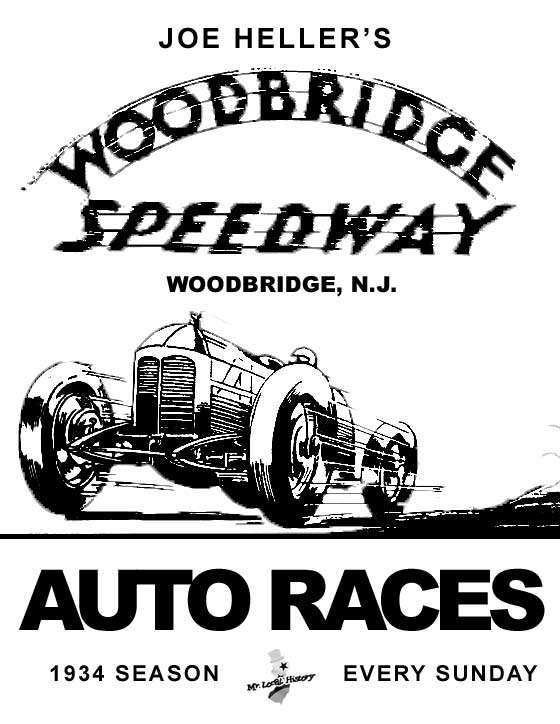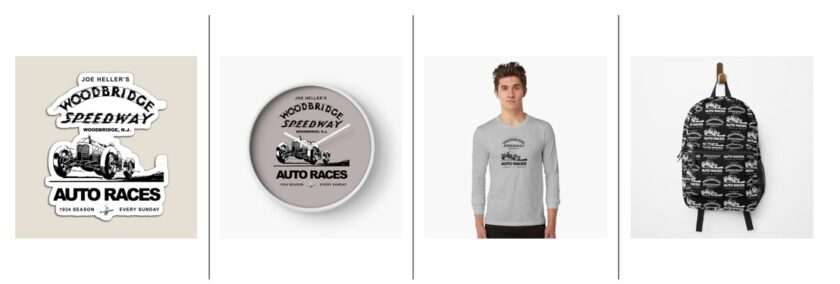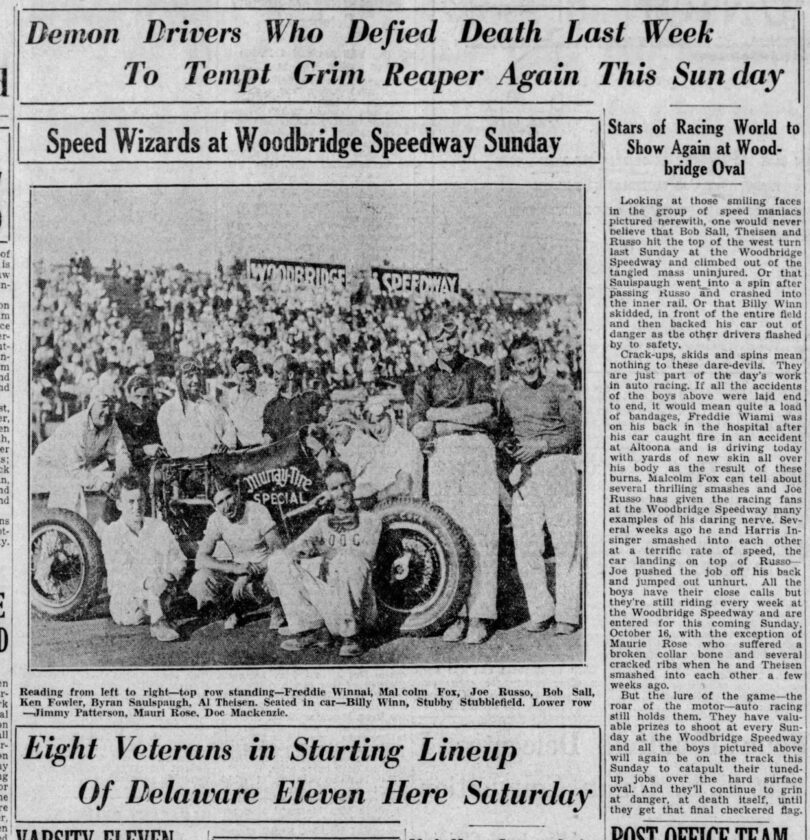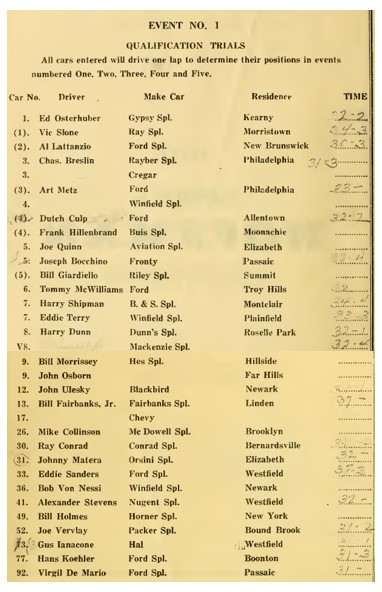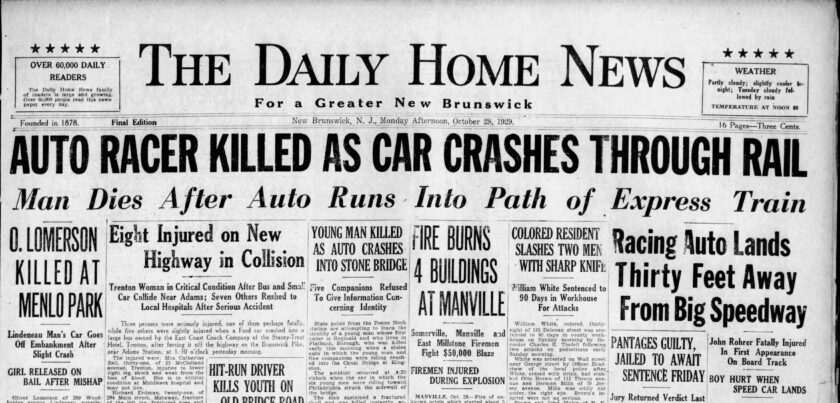This is a tale about auto racing legends of the early 1920s, known as daredevils and speed freaks, who traveled to a tiny new track built outside New York City in the small town of Woodbridge, New Jersey. What opened as a spectacle and a death-defying event, this Woodbridge Speedway quickly became the “fastest 1/2 mile speedway in the world.” And YES, we said it was made of wood!
Woodbridge, the 1/2 mile dirt oval track, opened on a trial basis on the 7th of April 1926. While it was open for only one race, the track shut down after just one race and then closed. During the offseason, the Woodbridge Speedway would be transformed into one of the most famous board tracks in the world, operating from 1927 to 1932. It was known as “the world’s fastest half-mile track” and was built by Wilbert Baine on where the Woodbridge High School football field stands today.
For six glorious years, the Woodbridge Speedway served race fans a death-defying series of automobile racing and multiple world speed records. Then, in 1932, due to accidents and a changing car design, the board track at Woodbridge Speedway was demolished and reconfigured as a flat dirt track that operated from 1933 to 1938.
Nothing remains of the Woodbridge Speedway where the Woodbridge High School football field sits today. Let’s see what our Mr. Local History researchers discovered about this iconic lost Jersey racetrack.
Jersey Motorsports Retrospectives: The Mr. Local History Project has a few researchers who love American motorsports. We’ve posted many stories about motorsports history in the Garden State. We welcome your comments and the end of this post.
A Digital Peak at Woodbridge Speedway History
Woodbridge Raceway – The Idea
Woodbridge was chosen for the speedway’s location because it offered several strategic advantages. Firstly, Woodbridge, located in Middlesex County, was close to New York City and other major urban areas, which made it accessible to a large population eager for entertainment and new recreational activities. The popularity of motor racing was rising, and Woodbridge’s proximity to well-trafficked highways made it an ideal spot for drawing crowds from across the region.
There were 24 board tracks built in the United States for automobile racing that ranged from a half mile in length to the two-mile monsters in Maywood, Illinois; Brooklyn, New York; Cincinnati, Ohio; and Tacoma, Washington. There was a 1/2 mile one in Woodbridge, NJ, and a 1 1/2 mile track west of Atlantic City, NJ—source: Board Tracks Guts, & Glory by Dick Wallen.
Additionally, Woodbridge had open land suitable for building a track. The surrounding area was less developed then, offering the space needed to construct a raceway without the constraints of nearby residential or commercial buildings. This helped limit noise complaints and other issues associated with such a venue.
Woodbridge Speedway Construction
The design of Woodbridge Speedway was initially straightforward: a dirt track carved out with slight banking in the turns. Woodbridge, a 1/2-mile dirt oval track, opened for one race meeting on April 7, 1926, and closed after the first race. A new approach to racing has been proven in other areas around the country to be faster and more exciting. Enter the “Board Track,” a speedway created with boards set on their side.
Wear Jersey Motorsports History!!!
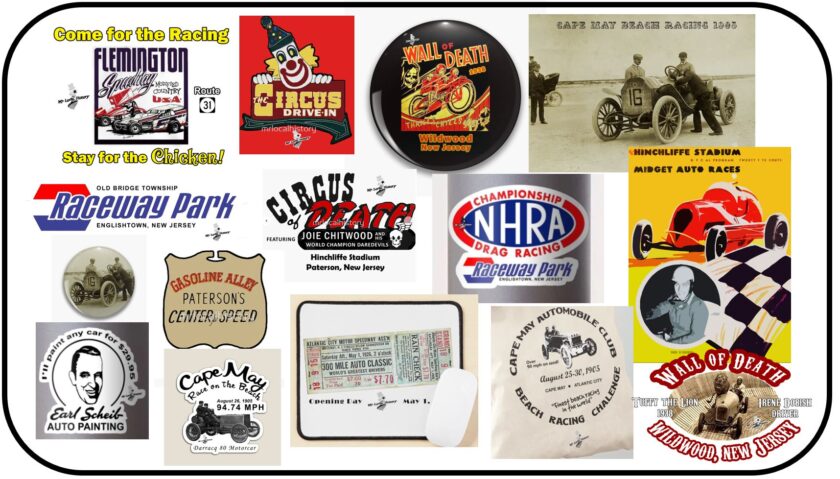
From 1927 to 1928, the Woodbridge Speedway’s wooden board track construction took approximately a year from start to finish. The Woodbridge Speedway was constructed using thousands of wooden planks placed on their side edge to form the half-mile oval track. The track was built by Wilbert Baine and featured 38-degree banked turns to allow cars to maintain high speeds through the turns. The construction was quite an engineering feat for its time, as board tracks were known for being difficult and expensive to maintain. Compared to racing today, the turns at Woodbridge were banked at 38 degrees, which is crazy compared to track designs today! Today’s most famous 1/2 mile track at Bristol Motor Speedway, the turns at Bristol Motor Speedway had a banking of 24–30 degrees, which was considered extreme for NASCAR drivers. The banking was reduced to somewhere around 16 degrees. Because of Woodbridge’s high track speed, several drivers perished in crashes there before a steel-cable guard rail was installed.
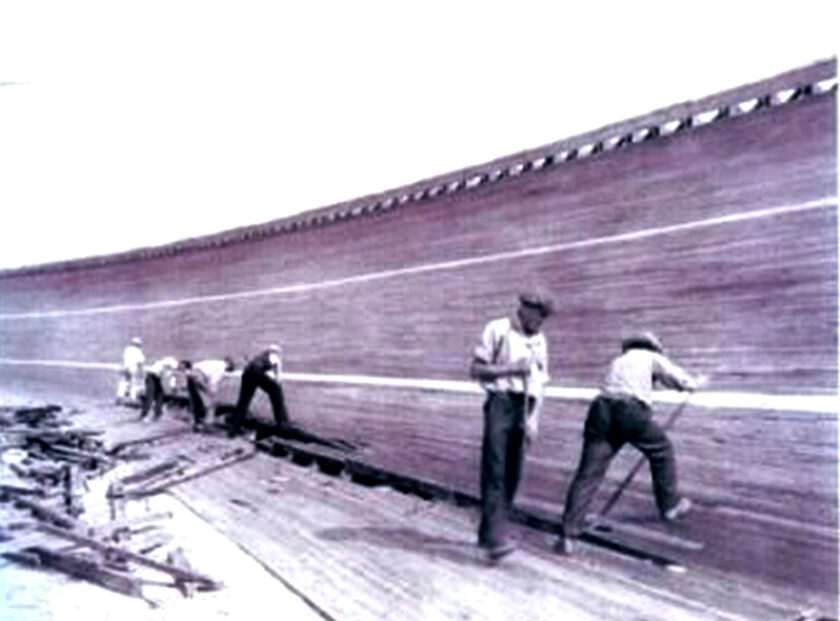
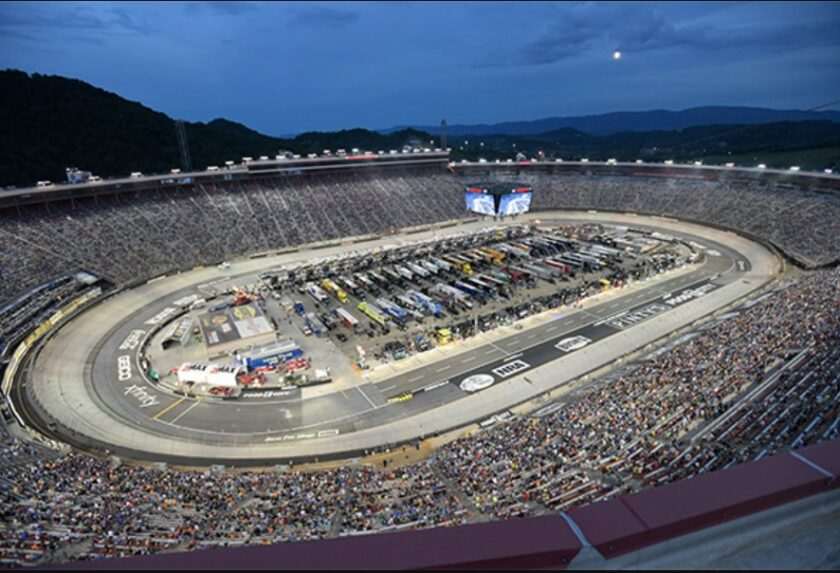
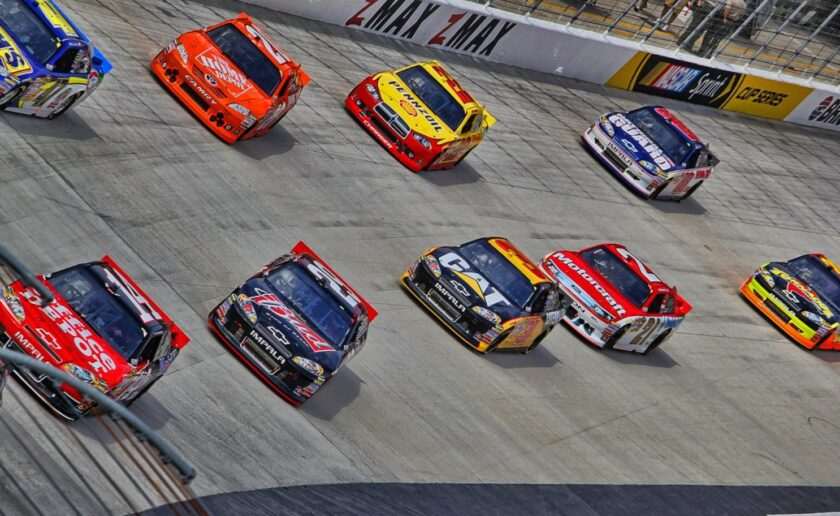
Finally, after numerous accidents and a rotting board surface, the board track was torn down and returned to a 1/2-mile dirt track, which was replaced by a slower, oiled dirt track in 1933.
Opening Day – July 8, 1928
Speedway developer Wilbert Baine was hired to build the wooden Woodbridge Speedway. Ralph A. Hankinson served as general manager and Joe Heller became the track promoter. With its new wooden board track, it officially opened on April 7, 1928, attracting over 4,000 spectators. Grandstand seating would set you back $1.75. “Official” programs sold for 15 cents (see below). At the official opening on Sunday, July 8, 1928, over 15,000 auto racing fans packed into the grandstands at the “wood bowl” race track after word got out just how insane these “Speed Wizzard Daredevils” were “tempting the Grim Reaper.”
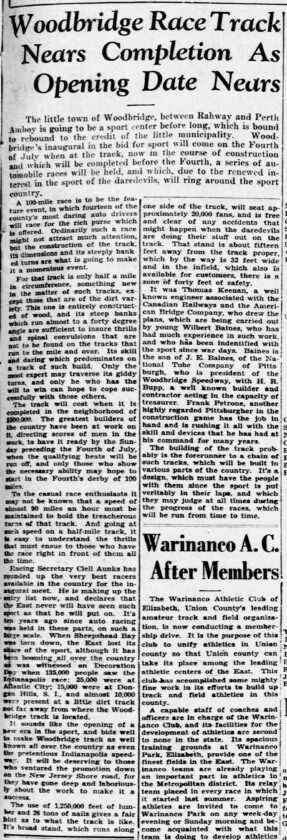
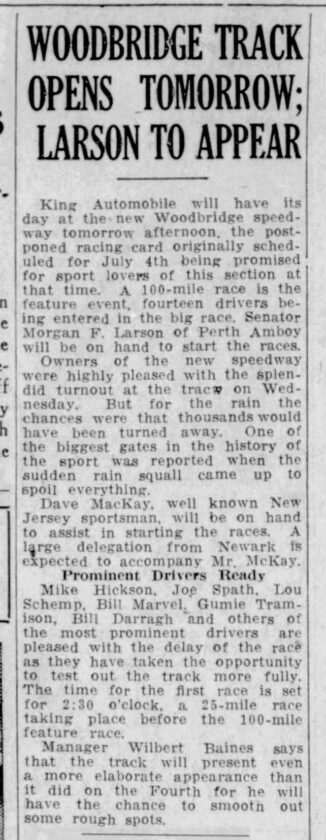
The best drivers could do a half-mile lap in 18 seconds for an average speed of 100 mph.” Consider that to today’s iconic speedway coliseum, Bristol Motor Speedway 1/2 mile track, where NASCAR’s top Xfinity Series race record was made by Elliott Sadler, setting that record at 94.740 miles per hour in 2012. The lap time was approximately 20.26 seconds with a 600-hp racecar.
Races were so popular that the Pennsylvania Railroad ran special trains later in the Speedway’s operation. Trains left from Penn Station in New York City, with stops in Newark and Elizabeth, and also from the Hudson Terminal. Spectators were let off at Edgar Station in the Edgar Hill section of Woodbridge, within walking distance of the stands. The special round trip fare from Penn Station was $1.05 and 90 cents from Hudson Terminal.
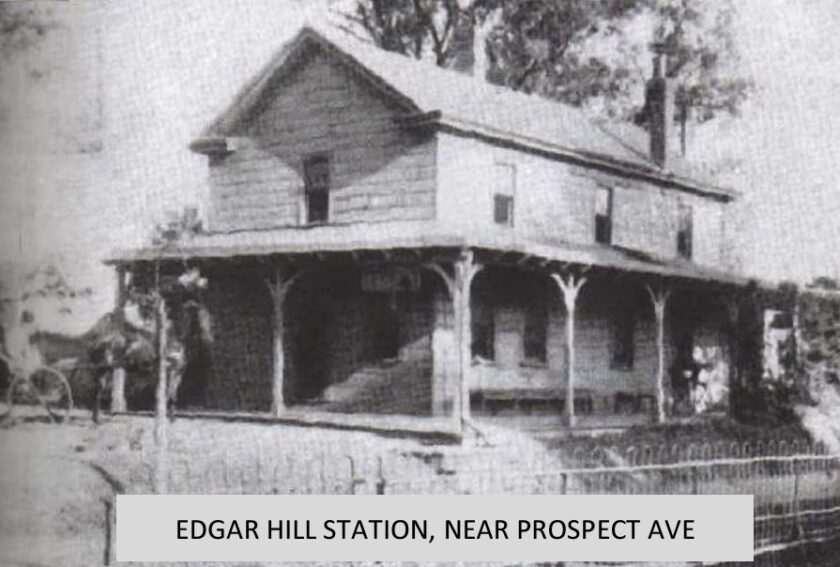
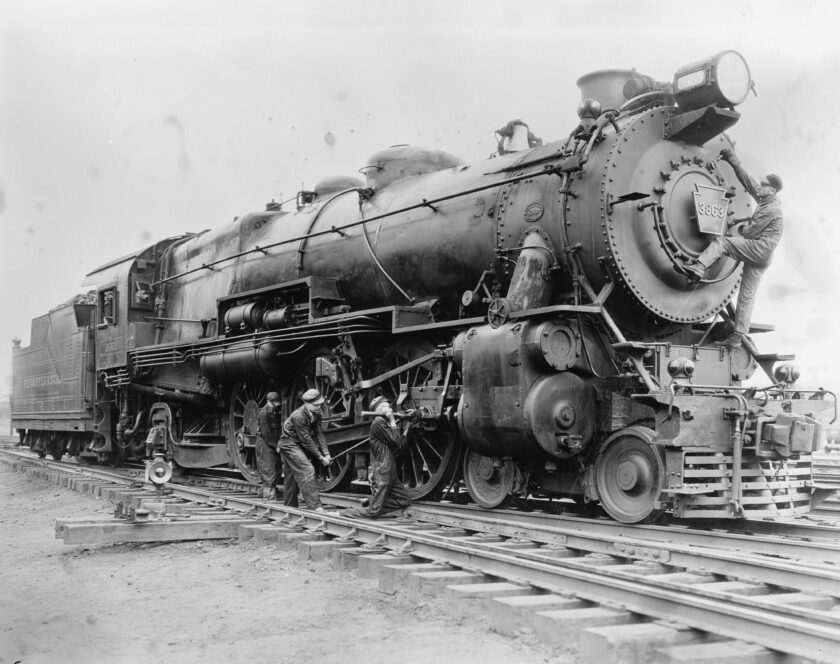
Those Daredevil Drivers
The Woodbridge Speedway attracted several famous drivers of the era. Some of the notable drivers who raced on the wooden track included:
- Freddy Frame: A 1932 Indianapolis 500 champion. He is best known for winning the 1932 Indianapolis 500 at a record average speed of 104.144 miles per hour in a Harry Hartz-owned Miller.
- Mauri Rose: was an American racing driver born on May 26, 1906, in Columbus, Ohio. He is best known for winning the Indianapolis 500 three times—1941, 1947, and 1948—making him one of the race’s most successful drivers. He was also the AAA National Champion in 1936. Despite his success on the track, Rose preferred to be known as an engineer. He worked at the Allison Engine Company in Indianapolis and played a significant role in developing the Chevrolet Corvette.
- Al Ladanzio: A local driver of fame from New Brunswick, NJ who made Woodbridge Speedway his home track.
- Red Moore: Another prominent local driver from New Brunswick. He primarily drove modified stock cars and midget cars during his racing career at the Woodbridge Speedway.
- Bert Karnatz: Born in Dearborn, Michigan, Bert won the last major board track race at Woodbridge in 1931. He was later killed when he blew a tire in 1934 at age 29, after a crash at the Veterans of Foreign Wars Speedway in Detroit, Michigan.
The Cars
The cars raced on the Woodbridge Speedway’s wooden track were impressive for their time. They included early one-seat cars with supercharged engines, considered cutting-edge technology in the late 1920s and early 1930s1. Some of the notable cars that raced included the Fronty Special, Vance Special, and Miller Majestic Special. Mickey Mouse Special, and Tee Lynn Ambler.
These cars were known for their speed and power, and they often tested new auto parts and designs that would later be used in production models. The races were intense and loud, with the roar of the engines echoing throughout the area.
Sanctioning Racing Organizations of the Period
The sanctioning body for Woodbridge Speedway’s midget car races in the 1930s was the American Automobile Association (AAA) Contest Board. AAA was one of the earliest and most influential organizations governing automobile racing in the United States at the time, and it sanctioned many of the nation’s midget, sprint, and championship car races.
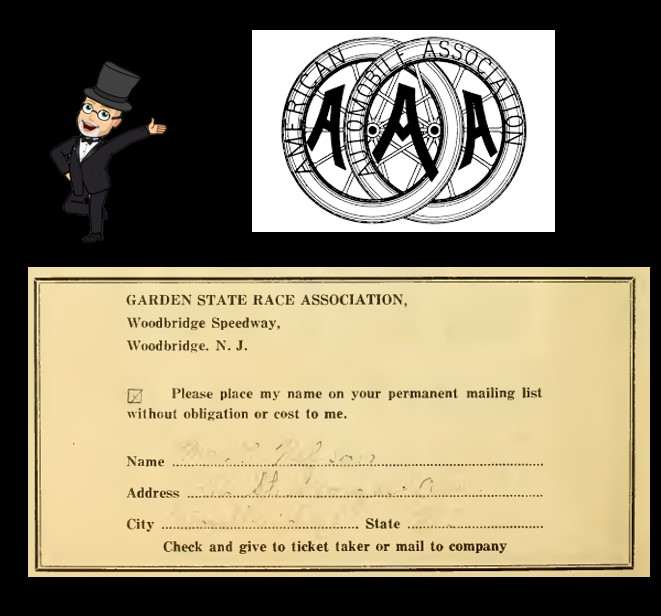
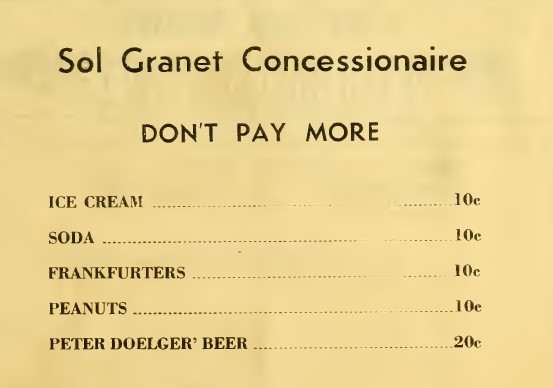
The Garden State Auto Racing Association also sanctioned several races at the speedway in the late 1930s. Later, other organizations like the United States Auto Club (USAC) and the American Racing Drivers Club (ARDC) would also become prominent in midget car racing. In fact, ARDC, founded in 1939 (just a year after Woodbridge Speedway’s opening), became one of the most well-known organizations dedicated solely to midget car racing, especially in the Northeast. Many midget races at Woodbridge Speedway were eventually run under ARDC’s sanction, allowing the track to attract skilled drivers and host well-regulated events.
Danger, Death, Closing
After numerous severe track accidents, the board track was torn down and replaced with a half-mile dirt track. The last configuration opened in 1933.
While the track quickly gained the reputation as “the world’s fastest half-mile track,” The high banking and wooden surface allowed cars to reach speeds over 90 miles per hour. The track’s popularity didn’t come without a cost. Several fatal accidents marred its history, leading to the decision to convert it to a dirt track in 1932. After the conversion, it continued to host races but never quite captured the same excitement as the wooden board track. The track finally closed after the 1938 racing season.
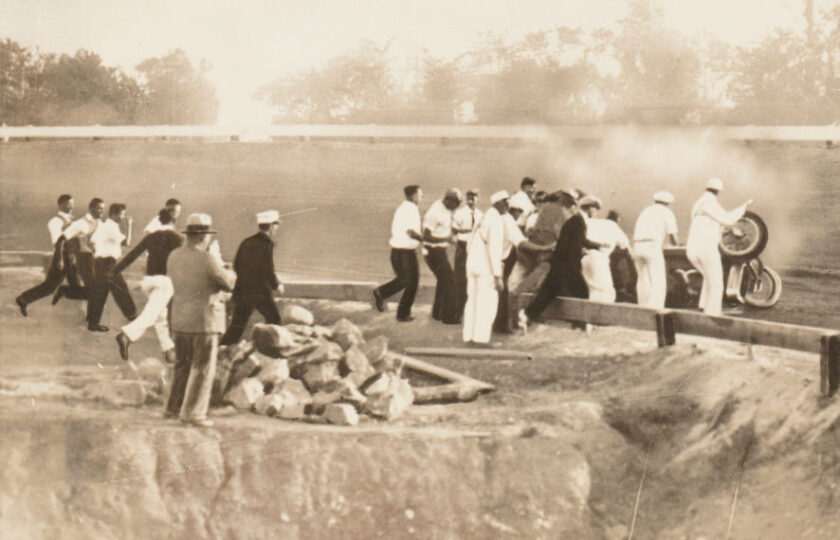
More and more, accidents due to high-speed tire blowouts and breaking through the outer barriers were responsible for at least four deaths. These drivers were known for their skill and bravery, pushing their cars to the limits on the high-speed wooden track. Several drivers, including Johnny Rohrer (1929), Bob Robinson (1930), Bernie Katz (1931), and Frankie Farmer (1932) lost their lives on the Woodbridge boards. To address the issue, in 1932, the track was converted to dirt, the banking was significantly reduced, and safety reinforcements were integrated into the guardrails. As a result, speeds were significantly reduced, helping to alleviate deadly crashes.


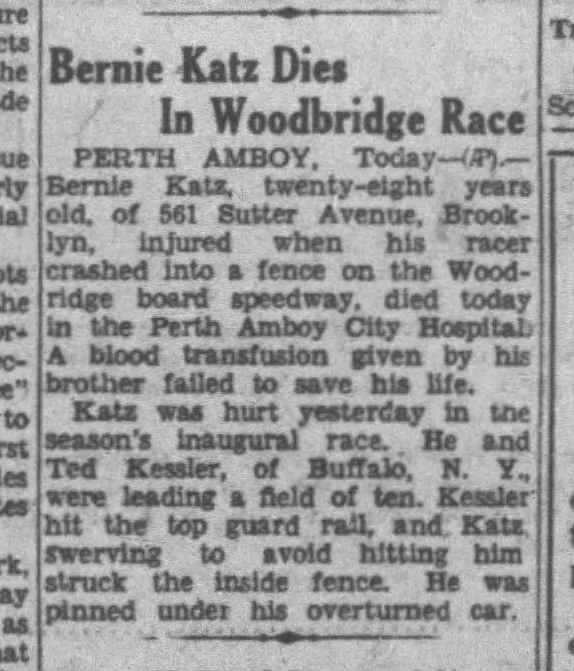

The last well-known “board track race” was run at the Woodbridge Speedway in 1931. Some of the smaller board tracks continued to hold midget and some motorcycle races after this but as for the big cars, an era had ended when Bernie Karnatz took the checkered flag at Woodbridge, New Jersey on October 18, 1931. Bernie Karnatz would later die in a fatal crash on July 15, 1934 in Detroit, Michigan.
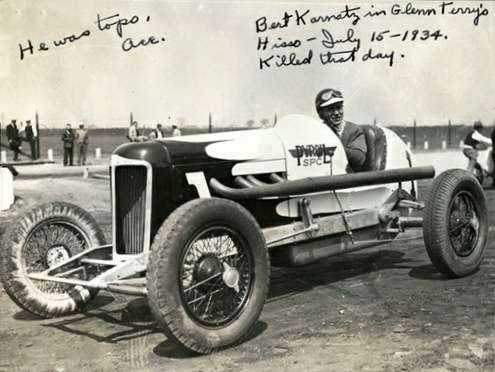
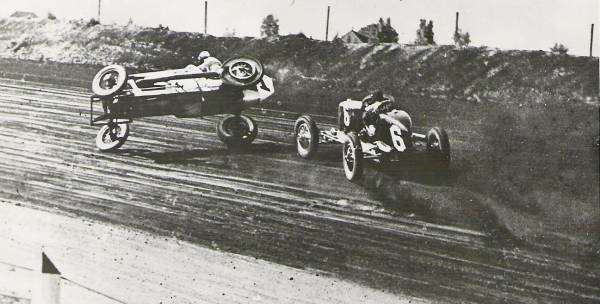
Honoring the Legacy of Woodbridge Speedway
Today, the area where Woodbridge Speedway once stood has been significantly developed, and residential and commercial buildings, along with the Woodbridge High School football field, now occupy the site of the former Speedway. Some longtime residents of Woodbridge still remember the approximate location and occasionally recall the speedway’s role in the community’s history.
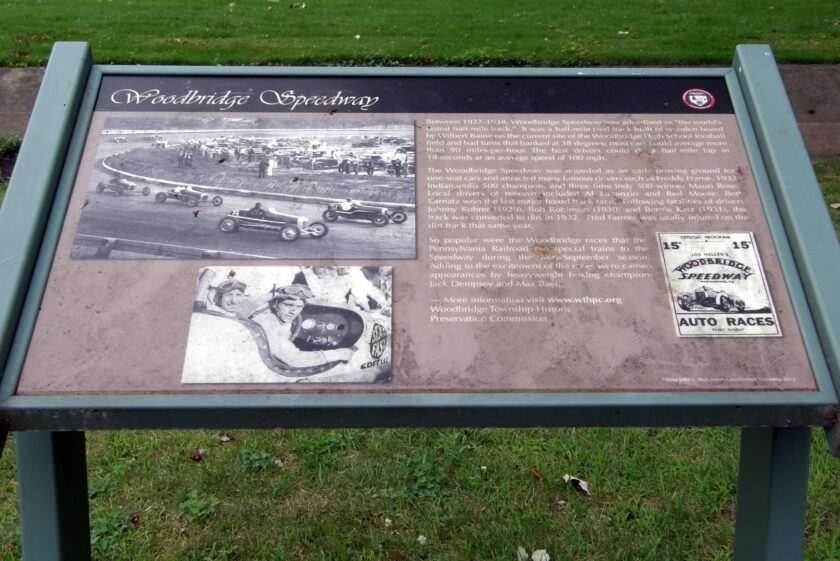
More information, visit www.wthpc.org
Woodbridge Township Historic Preservation Commission

